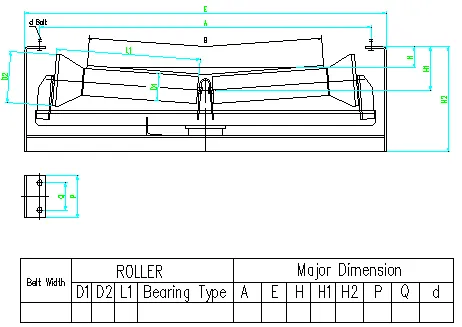 Afrikaans
Afrikaans  Albanian
Albanian  Amharic
Amharic  Arabic
Arabic  Armenian
Armenian  Azerbaijani
Azerbaijani  Basque
Basque  Belarusian
Belarusian  Bengali
Bengali  Bosnian
Bosnian  Bulgarian
Bulgarian  Catalan
Catalan  Cebuano
Cebuano  Corsican
Corsican  Croatian
Croatian  Czech
Czech  Danish
Danish  Dutch
Dutch  English
English  Esperanto
Esperanto  Estonian
Estonian  Finnish
Finnish  French
French  Frisian
Frisian  Galician
Galician  Georgian
Georgian  German
German  Greek
Greek  Gujarati
Gujarati  Haitian Creole
Haitian Creole  hausa
hausa  hawaiian
hawaiian  Hebrew
Hebrew  Hindi
Hindi  Miao
Miao  Hungarian
Hungarian  Icelandic
Icelandic  igbo
igbo  Indonesian
Indonesian  irish
irish  Italian
Italian  Japanese
Japanese  Javanese
Javanese  Kannada
Kannada  kazakh
kazakh  Khmer
Khmer  Rwandese
Rwandese  Korean
Korean  Kurdish
Kurdish  Kyrgyz
Kyrgyz  Lao
Lao  Latin
Latin  Latvian
Latvian  Lithuanian
Lithuanian  Luxembourgish
Luxembourgish  Macedonian
Macedonian  Malgashi
Malgashi  Malay
Malay  Malayalam
Malayalam  Maltese
Maltese  Maori
Maori  Marathi
Marathi  Mongolian
Mongolian  Myanmar
Myanmar  Nepali
Nepali  Norwegian
Norwegian  Norwegian
Norwegian  Occitan
Occitan  Pashto
Pashto  Persian
Persian  Polish
Polish  Portuguese
Portuguese  Punjabi
Punjabi  Romanian
Romanian  Russian
Russian  Samoan
Samoan  Scottish Gaelic
Scottish Gaelic  Serbian
Serbian  Sesotho
Sesotho  Shona
Shona  Sindhi
Sindhi  Sinhala
Sinhala  Slovak
Slovak  Slovenian
Slovenian  Somali
Somali  Spanish
Spanish  Sundanese
Sundanese  Swahili
Swahili  Swedish
Swedish  Tagalog
Tagalog  Tajik
Tajik  Tamil
Tamil  Tatar
Tatar  Telugu
Telugu  Thai
Thai  Turkish
Turkish  Turkmen
Turkmen  Ukrainian
Ukrainian  Urdu
Urdu  Uighur
Uighur  Uzbek
Uzbek  Vietnamese
Vietnamese  Welsh
Welsh  Bantu
Bantu  Yiddish
Yiddish  Yoruba
Yoruba  Zulu
Zulu Guide Rollers for Efficient Conveyor Belt Operation and Maintenance Solutions
Understanding Conveyor Belt Guide Rollers
Conveyor belt systems are integral to various industries, facilitating the efficient movement of materials and products. Among the essential components of these systems are guide rollers, specifically designed to assist in the alignment and stability of conveyor belts. This article delves into the significance of conveyor belt guide rollers, their types, and their maintenance.
Guide rollers play a crucial role in ensuring that the conveyor belt remains on the correct path during operation. They are strategically placed along the conveyor system to guide the belt and prevent it from tracking off course. Misalignment can cause significant wear on both the belt and the rollers, leading to costly repairs and downtime. Therefore, installing the appropriate guide rollers is vital for maintaining operational efficiency.
There are several types of guide rollers available, each catering to specific applications and environments. The most common types include
1. Flat Guide Rollers These are simple cylindrical rollers that support the belt's edges. They are commonly used in lighter applications where the load is not excessively heavy.
2. V-Groove Rollers These rollers have a V-shaped groove that helps to guide the belt more effectively, especially in systems with larger widths. The design ensures that the belt remains stable, preventing lateral movement.
conveyor belt guide rollers

3. Tapered Rollers These rollers are designed with a tapered end, which helps in aligning the belt, particularly in applications where the load varies frequently.
4. Adjustable Guide Rollers These rollers can be adjusted to accommodate different belt widths and alignments, making them versatile for various conveyor systems.
Regular maintenance of guide rollers is essential to prolong their lifespan and ensure optimal performance. Operators should routinely inspect the rollers for signs of wear and tear, such as cracks, deformities, or unusual noise during operation. It's also crucial to keep the rollers clean to prevent debris buildup, which can hinder their functionality.
Moreover, lubrication of the rollers is equally important. Proper lubrication reduces friction, which decreases wear and heat generation, ultimately extending the life of both the rollers and the conveyor belt. Operators should adhere to the manufacturer's recommendations regarding the type and frequency of lubrication.
In conclusion, conveyor belt guide rollers are vital components that ensure the smooth operation of conveyor systems. By selecting the appropriate type of roller and maintaining it diligently, businesses can enhance their productivity, reduce operational costs, and avoid unnecessary downtime. Understanding the role and maintenance of guide rollers is essential for any organization relying on conveyor systems to move materials efficiently.
-
Revolutionizing Conveyor Reliability with Advanced Rubber Lagging PulleysNewsJul.22,2025
-
Powering Precision and Durability with Expert Manufacturers of Conveyor ComponentsNewsJul.22,2025
-
Optimizing Conveyor Systems with Advanced Conveyor AccessoriesNewsJul.22,2025
-
Maximize Conveyor Efficiency with Quality Conveyor Idler PulleysNewsJul.22,2025
-
Future-Proof Your Conveyor System with High-Performance Polyurethane RollerNewsJul.22,2025
-
Driving Efficiency Forward with Quality Idlers and RollersNewsJul.22,2025





























